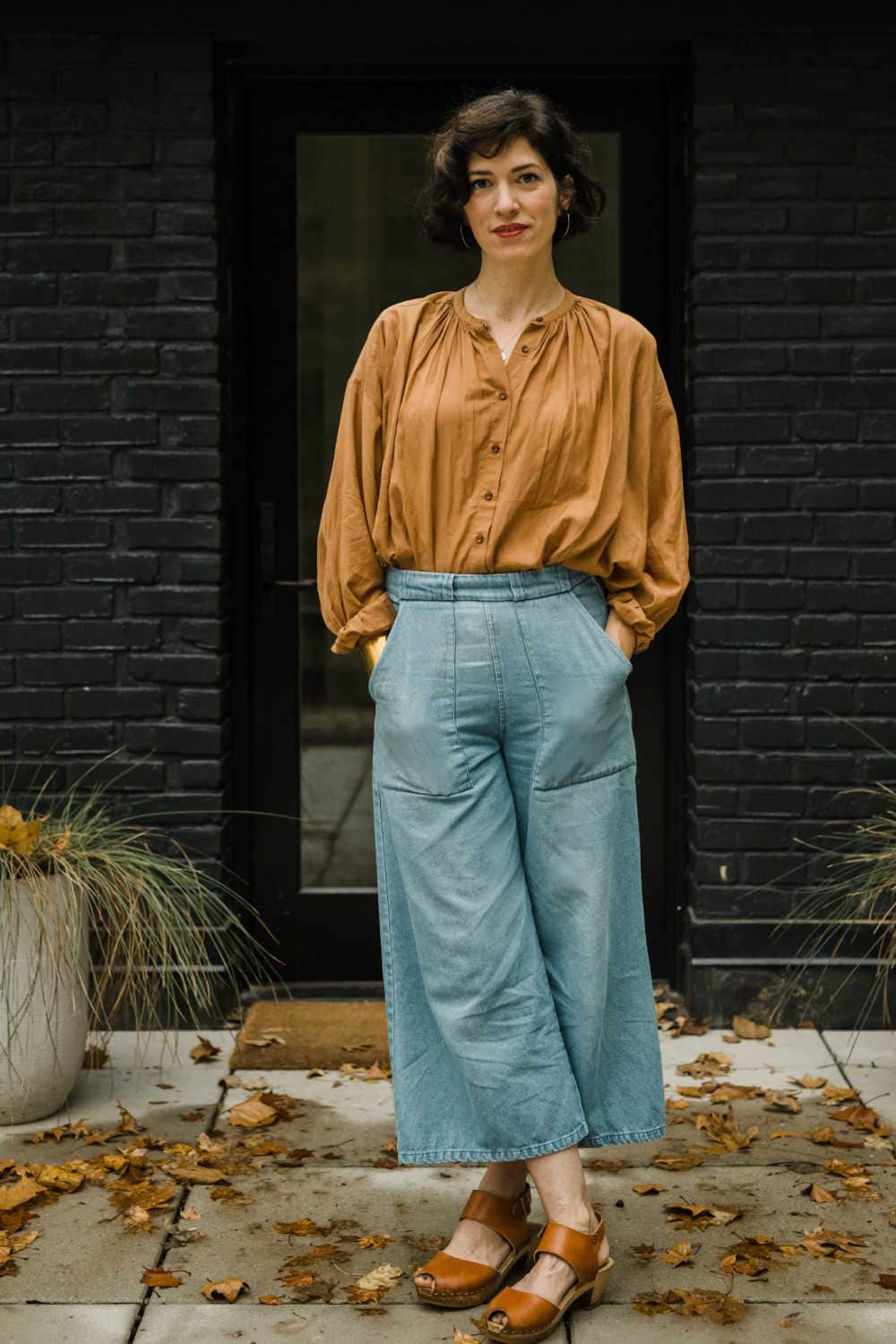.jpg) A couple of months ago I saw this video of an entire neighborhood learning sign language so they could communicate with a deaf toddler in their community.
A couple of months ago I saw this video of an entire neighborhood learning sign language so they could communicate with a deaf toddler in their community.
I cried happy tears. This level of inclusion–people going out of their way to hire and learn a new language–is not something to you see everyday. Or any day. But I dream of it.
And sometimes it feels like it might actually be doable. Other times it seems like a pipedream.
Doable.
Pipedream.
Doable.
Pipedream.
Doable: Did you know that in the early 1800’s Martha’s Vineyard was a sort of deaf utopia? The island had a high rate of deaf people (1 in 155, and in some areas as high as 1 in 4, as opposed to 1 in 6000 for the rest of the US) due to a hereditary condition brought over in the late 1700’s and the fact that many islanders married within the community. So the entire island used a highly developed form of sign language still referred to as Martha’s Vineyard Sign Language, whether they were deaf or not. The communication between deaf and hearing people was seamless and deafness was not considered to be a disability. “With no communication barrier, deaf individuals were fully integrated into island life, making livings as fishermen and farmers and participating in social, civic, and religious activities. There was no “deaf” society—no activities exclusive to the deaf.”
Pipedream: We live in a beautiful, charming community with homes that date back to the 1800’s, but also some beautiful mid-century gems and everything in between. I have seen a couple homes with ramps that have been clearly added onto for the sake of accessibility, but the majority, the VAST MAJORITY (I’m guessing in the high 90’s percentile) are not accessible. Why would they be? I don’t think antique wheelchairs allowed for much independence even if you could use a modern manual chair. Freak, even rich old Man Potter had to have someone just to push him around. And besides we hid the “cripples” back then. Of course we didn’t think about accessibility. And now that we’re in the 21st century we have to make our public buildings accessible, buuuuuuuuut if it’s a historical building and putting a ramp on it would ruin the integrity of the building…well then we just might be able to get away with no ramp. Like some of the very pretty buildings in our town. Did you know Lamp loves drama and acting? But the Fine Arts Center in town isn’t accessible. Oh well. Did I mention the building is really beautiful? And we’re not even talking about homes…..jpg) Doable: Barbie’s getting an accessible dreamhouse. No really. I already mentioned this last week, but it bears repeating: BARBIE’S WORLD IS FINALLY BEING MADE OVER TO BE ACCESSIBLE TO ALL THE DOLLS. And depending on how much of a collector you are, there is literally like 1-2 dolls in the entire Barbie community that have wheelchairs. (But of course there are thousands of children who play with those dolls.)
Doable: Barbie’s getting an accessible dreamhouse. No really. I already mentioned this last week, but it bears repeating: BARBIE’S WORLD IS FINALLY BEING MADE OVER TO BE ACCESSIBLE TO ALL THE DOLLS. And depending on how much of a collector you are, there is literally like 1-2 dolls in the entire Barbie community that have wheelchairs. (But of course there are thousands of children who play with those dolls.)
Pipedream: I’m not sure if Lamp has any friends currently who have accessible homes. I don’t mean like ADA style bathrooms or extra wide hallways, I just mean a ramp or 0 stairs to get inside. And here’s the thing–I GET IT. I really do. Until Lamp was born almost every home I’ve ever lived in wouldn’t be accessible. It’s just not done. Even most ranch style homes have 1-2 steps to get in. I’m not trying to shame the whole world about their inaccessible homes. It is just so normal and standard and … (record scratch) Normal. Standard.
I think that is where I ultimately land on pipedream. How do you fight against norms that are so normal they have never been considered a problem? And frankly, they’re not a problem for most people. But in terms of inclusion, it’s a problem. I mean is it really so crazy to think that one day half or even a quarter of all homes built in the US would be accessible? I don’t mean an elevator in every 2 story home, but that a person with a wheelchair could at least access the main level easily? Is that crazy? Let me ask you this, if you found out tomorrow your mother or father or your best friend would be a wheelchair user for the rest of their life, would you change your home to make it accessible? What do you think… do you see norms, especially in terms of housing, changing in the direction of accessibility? Why or why not?



I used to not think about accessibility in any kind of tangible way, only in this, “Yeah! Everyone should be able to go anywhere!” rosy-glasses attitude kind of way. But then I made a pair of new friends, whose son has pediatric hydrocephaly and so he needs and walker and wheelchair to get around. And we hang with them a lot (yay for friends), and suddenly those charming old downtown restaurants lost a little luster as our only option was to go around back (or sometimes, walk on by because there just wasn’t any good way to enter). We moved towns about 6 months ago, and we did our best to find a house that is more accessible (because we also know our parents are getting older and the future is real, ya’ll), and we bypassed houses we really liked due to their lack of accessibility…but even the house we ended up with has two stairs to reach the main level. And I hate that those two stairs will make it tricky for Nathaniel to feel The Most Welcome in our home. We did our best, but…It’s so frustrating. Even when you ARE ‘doing your best’, the more you realize needs to be done. I hope that architects are paying attention to the accessibility issue. It really needs addressing.
Your blog has made me much more aware of accessibility problems (and a hater of those 1-2 random steps that litter so many homes). It’s ridiculous to have steps in the garage AND the front of so many suburban homes when their front yards have space to make those couple of steps a lovely slope instead.
I don’t know what it will take to get us as a society to do more – more people opting for front ramps instead of stairs just because it’s a decent thing to do? More exposure to aesthetically pleasing ramps? Building companies making it the default standard in new homes?
I coach Wheelchair Tennis and have many friends who can not easily come to my home – sure we can carry them up the 5 steps to get in and some are able to use the 1st floor bathroom but for the most part, we meet elsewhere and it is frustrating. Because of the number of steps and the way my house is configured, making it accessible is really not an option. But, I have vowed that my next home will be welcoming and accessible for all. My brother recently built a home and that was a big criteria – infant, my friends were invited over during the build process to help make the modifications needed so it was truly accessible.
I will say, a friend in a chair, built an accessible lake home – accessible for her, as we found out when a number of us (4 in chairs) had a girls weekend. What was easily accessible for the owner was not so accessible for some of her friends…
I think when it becomes more common, more people are willing to make a change. I had never thought about whether my home was accessible or not. If anyone in our family befriended someone who used a wheelchair, we would 100% work to make our home a place he or she could enter. Unfortunately, so many people do not continue a pregnancy when they learn their child may have a limb difference or various genetic conditions. If we continue on this path, how will the world ever change? One thing I personally can do, is make simple changes to my home now, instead of waiting to know someone that needs these changes in order to enter my home.
I’m disabled. I’m also a home improvement expert and chief writer for a very large company that specializes in educating the public about the home industry. As such, I frequently get asked to write articles on things like accessibility. We’re working on a really big one now about aging in place.
And what I keep stressing to my editors is that accessibility is a tricky, tricky thing. It’s not one size fits all, as much as we preach Universal Design. I love universal design, I think it’s great, and it opens a lot of doors for people, but that doesn’t mean that it’s truly accessible for everybody.
As another commenter mentioned above, someone remodeled their home to make it accessible, but it turned out not to be accessible for others who were also wheelchair users.
So, while I frequently say, “The Future Is Accessible” and I do mean it, it’s not quite that easy. We need to strive for more accessibility, but we also need to be cognizant of the fact that we will never please everyone. Should we? I don’t know. That’s a bigger question.
With the cost of remodeling, it makes more sense to customize than it does to generically make accessible at times. There’s also a real issue when we force places to make spaces accessible; they do the bare minimum, because it’s impossible to please everybody so why try? Our community center downtown claims to be fully accessible, but their bathroom is a nightmare. I’m constantly on them about it, but because it technically meets the ADA requirements for a community center, they feel they’ve done enough. Never mind that it’s very difficult to use.
I could go on forever, but this is a topic that’s a lot more nuanced than many people really think that it is.
My daughter and I both have conditions that make our muscles not work the average way. Hence stairs are THE nemesis. We built our home and we told the builders no stairs. They stated that all door areas would need “at least a couple.” It is just ridiculous. I am told very few builders will accomodate, even if there are needs; and that you need $$$ to be able to find one that will. It is sad, frustrating and makes me have anxiety daily. Also, like your neighborhood, all my daughter’s friends have stairs into their home and NO railings! (which would help a lot with our condition) Thank you for your work and advocacy; and thanks to Lamp to be brave enough to share her story with the world.